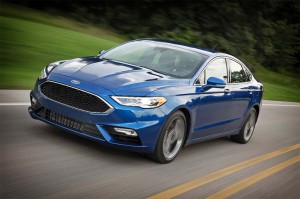The outlook for new car sales is getting growing a bit dimmer, according to one organization.
The U.S. light vehicle market will contract 1.8% in 2017, said BMI Research in a new report, which is a downward revision from the organization’s previous expectation of a 1% decline.
BMI notes that a growing used vehicle inventory is adding to the pressure of a market that is already reaching a natural plateau helping to drive down any increase in new vehicle sales.
BMI said the largest decline will come in the passenger car segment, where it expects sales to fall 6%, as the shift away from smaller cars continues and a stock of nearly new and lower-priced, second-hand alternatives continues to grow.
In addition, the Federal Reserve Board has increased interest rates and the number of problem auto loans, particularly sub-prime loans, is increasing, according to Fitch Rating Service, BMI’s parent company.
(GM idling five plants to curb inventory build up. Click Here for the story.)
Fitch Rating data show a 22% year-on-year increase for sub-prime delinquencies of 60 days or more to 4.68% as of August 2016. Prime delinquencies of the same period rose 17% to 0.41%. The trend is expected to continue upwards which would put sub-prime delinquencies near their December 2008 peak of 5.04% and increases the risk not only of the new and used market in future years by losing consumers who cannot afford vehicles, but also of the financing companies and institutions that provide the loans.
“Another risk to the new vehicle market, which we continue to highlight, is the growing debt burden,” BMI noted.

The rise in SUV and crossover sales are putting the squeeze on midsize cars in a contracting market, BMI suggests.
BMI observed consumers have been taking on increased amounts of credit thanks to low interest rates and longer loan terms, which has enabled many people to buy a new vehicle who might not have been able to afford it in the past.
While the same second-hand market pressure will be evident in the light truck market, data shows that consumers are retaining SUVs and trucks for longer than cars, which means the used inventory is not building as rapidly.
“We also expect business demand, linked to our Country Risk team’s expectation for real private investment, to turn positive in 2017, as well as new models in the increasingly popular crossover and SUV market to keep light truck growth positive, albeit marginal at 1%,” BMI said.
(U.S. auto sales rebound in November. Click Here for more.)
“Since 2010, the new market has been recovering from the lows of 2008 and 2009. This has contributed to sustained growth levels, which are relatively unusual for a highly mature market, and resulted in record volumes in 2015 as this recovery period turned into real growth.
“It is natural in a mature market that this kind of growth cannot go on indefinitely and the growth in the used vehicle stock, which was also hit by fewer people trading in vehicles over the 2008-2011 period, is accelerating the downturn,” BMI noted.
For consumers, the turn in the market is good news.
The used market supply is now back to 2009 levels and is forecast to continue growing as the upturn in the leasing market in recent years is bringing a robust supply of ex-lease vehicles to market. A burgeoning supply should also keep prices in check, meaning consumers have access to relatively new vehicles at low prices. Even a healthy U.S. consumer supported by wage growth and tax cuts, who is in a position to spend on big-ticket items, will have the opportunity to do so at a lower cost.
Midsize cars account for the biggest percentage of the growing used car market at around 20%, followed by compact cars, adding to BMI’s prediction of ongoing declines in the new passenger car segment.
(To see how Toyota believes sales will do in 2017, Click Here.)
Passenger car segments, where vehicles turn over relatively quickly, have some of the lowest retention rates for new two-year old vehicles, at less than 50%, which means around half of all two-year old models are returning to the market. SUVs and pick-up trucks have much higher retention rates for two-year old models at well more than 60%.


